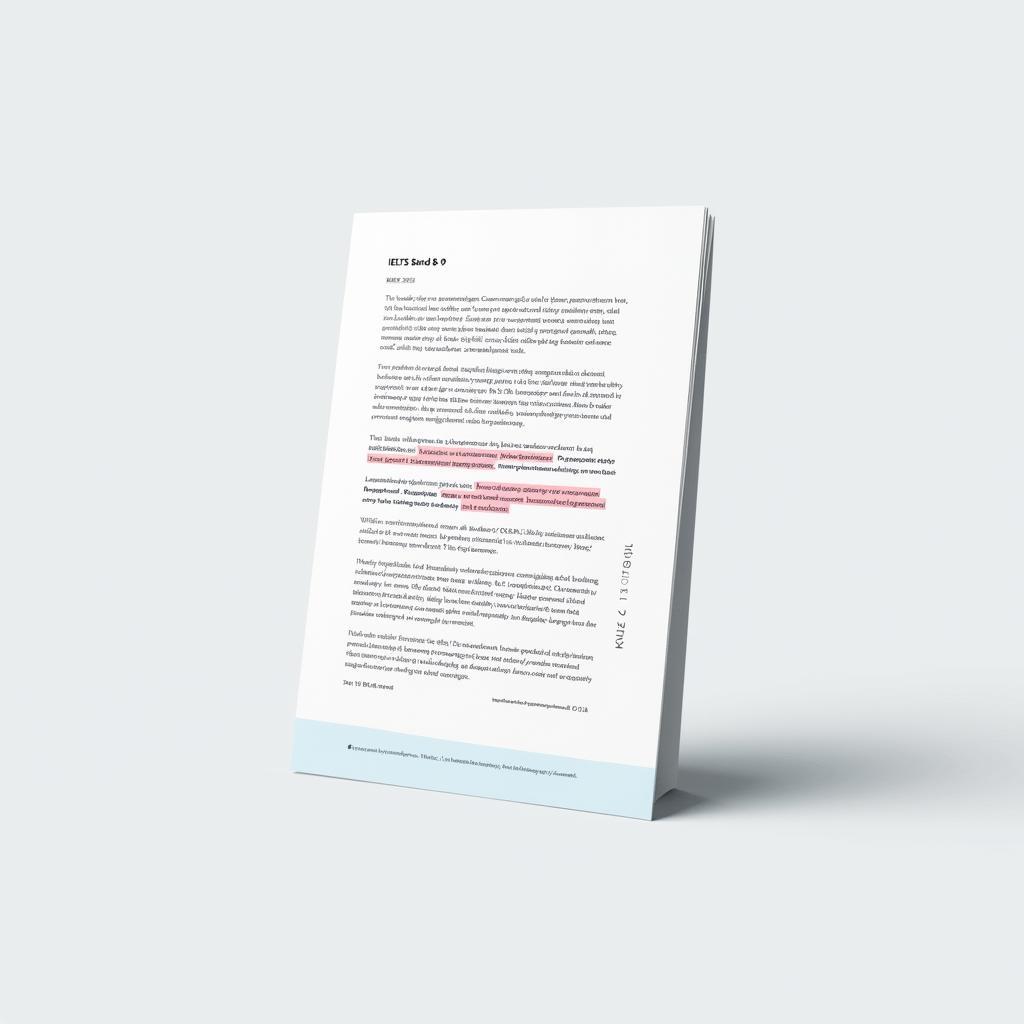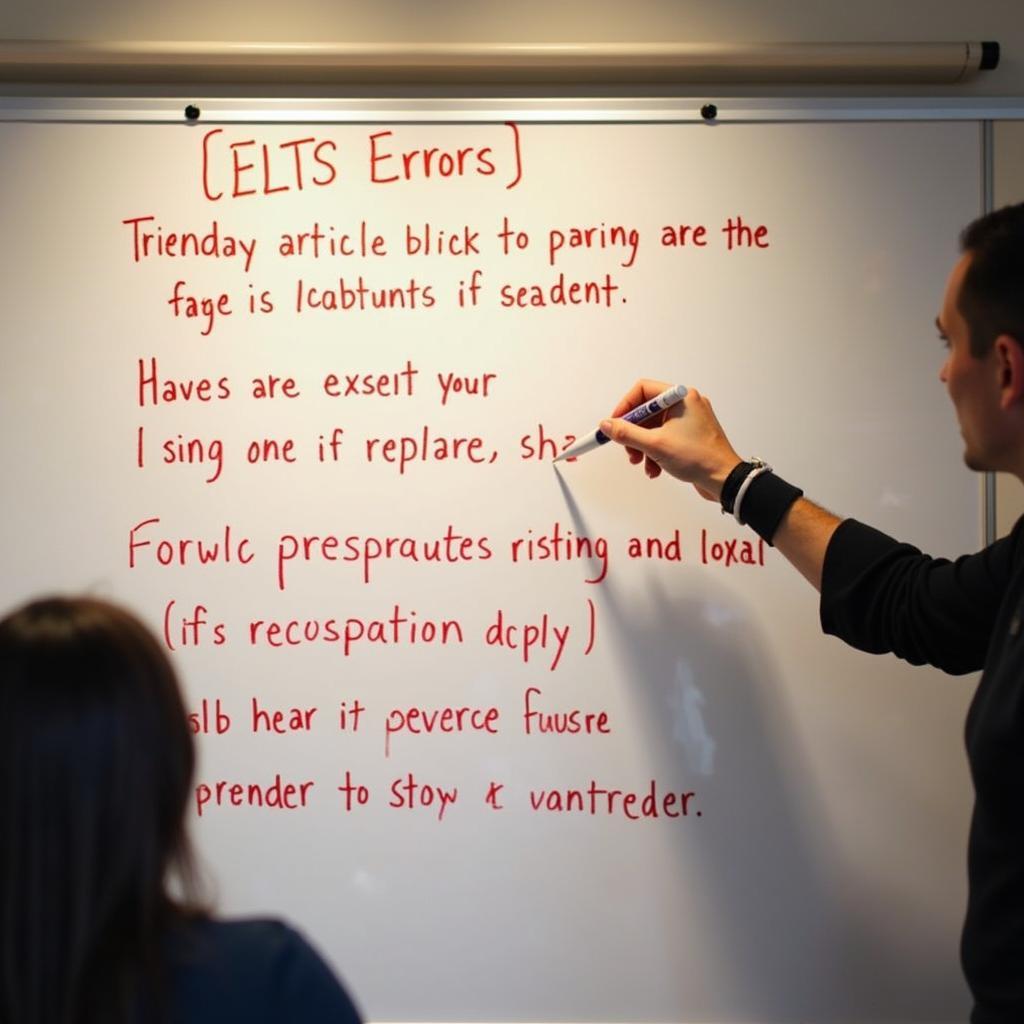Mở bài
Chủ đề “Should Fast Food Chains Be Regulated” thường xuyên xuất hiện trong IELTS Writing Task 2 dưới các biến thể liên quan tới sức khỏe cộng đồng, thuế đối với đồ ăn nhanh và hạn chế quảng cáo nhắm vào trẻ em. Vì gắn với thực tiễn chính sách ở nhiều quốc gia, đây là một chủ đề “đinh” trong mảng Health, Government và Advertising. Trong bài viết này, bạn sẽ học: 3 bài mẫu theo dải band 5-6, 6.5-7, 8-9; phân tích chấm điểm chi tiết theo 4 tiêu chí; bộ từ vựng học thuật cốt lõi; 6 cấu trúc câu ăn điểm; checklist tự đánh giá và chiến lược làm bài.
Một số đề thi thực tế/đã được đăng tải trên các trang uy tín:
- Some people think governments should impose a higher tax on fast food to reduce consumption. To what extent do you agree or disagree? (được thảo luận trên IELTS Liz và IELTS-Blog)
- Advertising of junk food to children should be banned. Do you agree or disagree? (xuất hiện nhiều lần trên IELTS-Blog/British Council topic bank)
- Governments should regulate fast food chains in the same way as tobacco and alcohol industries. To what extent do you agree or disagree? (biến thể phổ biến trong chủ đề sức khỏe công cộng)
[internal_link: ielts-writing-task-2-health]
 Hình minh họa đề should fast food chains be regulated trong chủ đề sức khỏe và chính sách công
Hình minh họa đề should fast food chains be regulated trong chủ đề sức khỏe và chính sách công
1. Đề Writing Part 2
Governments should regulate fast food chains in the same way they regulate the tobacco and alcohol industries. To what extent do you agree or disagree?
Dịch đề: Chính phủ nên quản lý các chuỗi đồ ăn nhanh theo cách giống như cách họ quản lý ngành thuốc lá và rượu. Bạn đồng ý hay không đồng ý ở mức độ nào?
Phân tích đề bài:
- Dạng câu hỏi: Opinion (To what extent do you agree or disagree?). Bạn cần nêu rõ mức độ đồng ý/không và phát triển 2-3 luận điểm chính.
- Thuật ngữ quan trọng:
- regulate: quản lý/kiểm soát bằng luật, thuế, tiêu chuẩn
- in the same way: “ở mức tương đương như thuốc lá/rượu” – gợi ý mức độ nghiêm ngặt cao (cảnh báo sức khỏe, hạn chế quảng cáo, thuế tiêu thụ đặc biệt)
- Lỗi thường gặp:
- Lạc đề khi bàn về “đồ ăn nhanh có ngon hay không”
- Đưa ví dụ bằng số liệu bịa đặt
- Nhầm “ban” (cấm) với “regulate” (quy định/kiểm soát)
- Thiếu thừa nhận tính khác biệt: fast food ≠ tobacco/alcohol (mức độ gây hại, liều lượng)
- Cách tiếp cận chiến lược:
- Chọn lập trường “partly agree”: ủng hộ quy định nghiêm ở khía cạnh quảng cáo, dán nhãn, thuế theo thành phần; phản đối “y chang” vì tính chất sản phẩm khác nhau.
- Dẫn dắt bằng tiêu chí “risk, externalities, and proportionality” (mức rủi ro, chi phí xã hội, và tương xứng chính sách).
2. Bài mẫu Band 8-9
Bài Band 8-9 cần có luận điểm sắc bén, phát triển logic, ví dụ có tính khái quát dựa trên bằng chứng thường thấy, phạm vi từ vựng học thuật và kiểm soát ngữ pháp chắc chắn.
Essay (298 words):
While the public-health harms of ultra-processed foods are increasingly documented, treating fast food chains exactly like tobacco or alcohol companies would be a category error. I therefore partly agree: robust regulation is justified, yet it should be proportionate to risk and targeted at practices that magnify harm.
First, there is a compelling case for tighter rules on marketing, pricing, and transparency. Like cigarettes and spirits, fast food products often exploit behavioural vulnerabilities, especially among children. Governments can legitimately curb advertising to minors, mandate front-of-pack nutrition labelling, and impose fiscal measures such as sugar and salt taxes. These policies correct market failures—consumers lack full information, and the medical costs of diet-related diseases are externalised to healthcare systems—while preserving adult choice.
However, equating fast food with tobacco is unsound. Tobacco is harmful at any dose; fast food, in moderation, is not intrinsically lethal. A copy-and-paste regime of plain packaging, graphic warnings, or near-total ad bans would be disproportionate and could carry unintended consequences, including regulatory overreach and the stigmatisation of low-income consumers who rely on affordable convenience foods.
The most sensible pathway is smart regulation: set reformulation targets, penalise predatory price promotions, restrict location-based advertising near schools, and require standardised portion information. At the same time, governments should subsidise healthier options and invest in food education. Such a package aligns incentives across industry and consumers, nudging diets in a healthier direction without collapsing choice into coercion.
In short, fast food chains should be regulated, but not as if they were selling tobacco. A calibrated framework—evidence-based, risk-sensitive, and equity-minded—offers the best odds of improving population health sustainably.
Phân tích Band điểm
| Tiêu chí | Band | Nhận xét |
|---|---|---|
| Task Response (Hoàn thành yêu cầu) | 8 | Trả lời trực tiếp, lập trường “partly agree” rõ ràng, phát triển đủ hai mặt và kết luận nhất quán. Có khuyến nghị chính sách cụ thể, tránh số liệu bịa đặt. |
| Coherence & Cohesion (Mạch lạc & Liên kết) | 8 | Mở-thân-kết rõ ràng, mỗi đoạn một ý chính; dùng từ nối mượt mà, tham chiếu logic. Không lạm dụng từ nối, mạch ý tiến triển tự nhiên. |
| Lexical Resource (Từ vựng) | 8 | Vốn từ học thuật đa dạng: proportionate, externalised, regulatory overreach, behaviour vulnerabilities; collocations chuẩn. Từ vựng chính xác theo ngữ cảnh. |
| Grammatical Range & Accuracy (Ngữ pháp) | 8 | Câu phức, mệnh đề quan hệ, cụm phân từ dùng linh hoạt; chính tả/chấm câu chuẩn. Rất ít lỗi nhỏ, không ảnh hưởng diễn đạt. |
Các yếu tố giúp bài này được chấm điểm cao
- Lập luận theo nguyên tắc proportionality: không đồng nhất fast food với tobacco.
- Chính sách cụ thể và hợp lý: fiscal measures, labelling, hạn chế quảng cáo gần trường học.
- Collocations học thuật chuẩn xác: market failures, externalised costs, smart regulation.
- Cấu trúc câu đa dạng: mệnh đề nhượng bộ, cụm phân từ, non-defining relative clauses.
- Tránh cực đoan, đưa giải pháp cân bằng giữa quyền lựa chọn và sức khỏe cộng đồng.
- Kết luận đóng khung lại lập trường với tiêu chí evidence-based, risk-sensitive.
 Bài mẫu band 8-9 cho đề should fast food chains be regulated với phân tích tiêu chí
Bài mẫu band 8-9 cho đề should fast food chains be regulated với phân tích tiêu chí
3. Bài mẫu Band 6.5-7
Bài Band 6.5-7 có lập trường rõ, luận điểm hợp lý nhưng từ vựng/khả năng phát triển chưa thật sâu, đôi khi lặp từ hoặc thiếu tinh chỉnh.
Essay (262 words):
Many people argue that fast food chains should face the same rules as tobacco and alcohol companies. I agree that stronger controls are necessary, but I do not think an identical approach is appropriate.
To begin with, stricter oversight is justified because cheap and highly processed meals are linked with obesity and diabetes. Governments can limit advertising, especially to children, and require clear nutrition labels so that consumers make better choices. They can also introduce targeted taxes on extremely sugary or salty items to discourage overconsumption. These steps would send the right market signals and raise awareness without removing people’s freedom.
However, fast food is not the same as cigarettes. If eaten occasionally, a burger or fried chicken is not immediately harmful, while any use of tobacco is dangerous. Therefore, applying plain packaging or showing graphic warnings would be excessive and probably ineffective. Instead, governments should encourage reformulation and set portion standards, so that meals become gradually healthier. They could also restrict buy-one-get-one promotions that push people to eat more than they need.
In conclusion, fast food chains should be regulated more strictly than they are now, but not exactly like tobacco and alcohol. A balanced combination of advertising limits, transparent labels, and modest taxes, together with education, is likely to deliver better long-term results.
Phân tích Band điểm
| Tiêu chí | Band | Nhận xét |
|---|---|---|
| Task Response (Hoàn thành yêu cầu) | 7 | Quan điểm rõ ràng, luận điểm hợp lý, có giải pháp. Một số ý còn khái quát, thiếu chiều sâu chứng cứ. |
| Coherence & Cohesion (Mạch lạc & Liên kết) | 7 | Chia đoạn hợp lý, ý nối tự nhiên. Vẫn còn vài chỗ lặp từ và chuyển ý chưa tinh tế. |
| Lexical Resource (Từ vựng) | 7 | Dùng được collocations phổ biến; vài chỗ còn chung chung như “raise awareness”, “better choices”. Thiếu một số thuật ngữ học thuật sâu. |
| Grammatical Range & Accuracy (Ngữ pháp) | 7 | Câu phức ổn, có điều kiện loại 1. Một số cấu trúc nâng cao chưa đa dạng; hầu như không có lỗi nặng. |
So sánh với bài Band 8-9
- Độ sâu lập luận: Band 8-9 triển khai “market failures/externalities” và “proportionality”, bài 6.5-7 dừng ở mức logic thông thường.
- Từ vựng: Band 8-9 dùng academic collocations chuẩn xác; Band 6.5-7 dùng cụm trung tính.
- Cấu trúc câu: Band 8-9 có non-defining clauses, cụm phân từ; Band 6.5-7 ít cấu trúc nâng cao.
4. Bài mẫu Band 5-6
Bài Band 5-6 thường có ý tưởng phù hợp nhưng phát triển lỏng, lặp ý, dùng từ chưa chuẩn, lỗi mạo từ/giới từ/thì.
Essay (258 words):
Some people say fast food companies must be controlled same as tobacco and alcohol. I think this is too strict idea, but also we need more control for fast food.
Firstly, fast food can cause health problems for many people, especially young people. They see a lot of ads and then they buy it. Government should stop to advertise junk food to children and put big warn labels on the packages. Also, there should be a tax for sugar so people will buy less. These actions will make people to understand fast food is not healthy.
However, it is not fair to treat fast food like smoking. Cigarettes are always dangerous, but fast food is only bad when you eat too much. If we make same rules like plain packaging or total ban of advertising, it will damage for business and also poor people who need cheap meals. Government should give subsidy for healthy foods and teach in schools. In that way, people can choose better.
In conclusion, fast food chains need regulations, but not exactly same as tobacco and alcohol. With some better policies, we can improve public health.
Phân tích Band điểm
| Tiêu chí | Band | Nhận xét |
|---|---|---|
| Task Response (Hoàn thành yêu cầu) | 6 | Trả lời đúng chủ đề, có quan điểm. Phát triển ý còn mỏng, ví dụ chung chung. |
| Coherence & Cohesion (Mạch lạc & Liên kết) | 5.5 | Chia đoạn cơ bản, lập luận rời rạc; từ nối đơn giản và lặp. |
| Lexical Resource (Từ vựng) | 5.5 | Từ vựng hạn chế; nhiều collocations sai (“warn labels”). Ít biến đổi từ. |
| Grammatical Range & Accuracy (Ngữ pháp) | 5 | Lỗi mạo từ, giới từ, cụm động từ; cấu trúc câu đơn giản, vài câu sai ngữ pháp. |
Những lỗi sai của bài – phân tích & giải thích
| Lỗi sai | Loại lỗi | Sửa lại | Giải thích |
|---|---|---|---|
| too strict idea | Collocation | too strict an idea | Sau “too + adj + a/an + noun” |
| more control for | Giới từ | more control over | Collocation: control over something |
| stop to advertise | Cụm động từ | stop advertising | Stop + V-ing = dừng hành động đang làm |
| big warn labels | Từ loại/collocation | large warning labels | Warning (n) + labels; big không tự nhiên |
| a tax for sugar | Giới từ | a tax on sugar | Standard collocation: tax on |
| people to understand | Cấu trúc | people understand | Make + O + bare infinitive |
| same rules like | So sánh | the same rules as | The same … as |
| damage for business | Giới từ | damage to business | Collocation: damage to |
| also poor people | Cấu trúc | and also affects poor people | Cần động từ; tránh mơ hồ |
| subsidy for healthy foods | Số nhiều/collocation | subsidies for healthy food | Thường dùng số nhiều “subsidies”; “food” không đếm được trong ngữ cảnh chung |
Cách Cải Thiện Từ Band 6 Lên Band 7
- Nâng collocations chuẩn: control over, impose a tax on, warning labels, advertising restrictions.
- Đa dạng cấu trúc câu: thêm mệnh đề quan hệ không xác định, cụm phân từ, điều kiện.
- Mở rộng ý bằng nguyên tắc chính sách: proportionality, externalities, information asymmetry.
- Kiểm tra lỗi mạo từ/giới từ có hệ thống; đọc to để phát hiện câu “gồ ghề”.
- Đưa giải pháp cụ thể và khả thi thay vì khẩu hiệu.
 Các lỗi phổ biến trong bài band 5-6 về should fast food chains be regulated
Các lỗi phổ biến trong bài band 5-6 về should fast food chains be regulated
5. Từ vựng quan trọng cần nhớ
| Từ/Cụm từ | Loại từ | Phiên âm | Nghĩa tiếng Việt | Ví dụ (tiếng Anh) | Collocations |
|---|---|---|---|---|---|
| regulate | v | /ˈrɛɡjʊleɪt/ | quy định/kiểm soát | Governments should regulate price promotions near schools. | regulate advertising; regulate the market |
| legislation | n | /ˌlɛdʒɪsˈleɪʃn/ | luật pháp | Effective legislation can curb deceptive marketing. | health legislation; pass/enact legislation |
| externality | n | /ˌɛkstɜːˈnælɪti/ | ngoại tác | Obesity-related costs are a negative externality. | negative/positive externality |
| proportionality | n | /prəˌpɔːʃəˈnælɪti/ | tính tương xứng | Policies must meet the test of proportionality. | principle/test of proportionality |
| reformulation | n | /ˌriːˌfɔːmjʊˈleɪʃn/ | tái công thức (giảm muối/đường) | Reformulation targets can reduce salt intake. | set/meet reformulation targets |
| fiscal measure | n | /ˈfɪskl ˈmɛʒə/ | biện pháp tài khóa | A sugar levy is a fiscal measure to shift demand. | implement fiscal measures |
| information asymmetry | n | /ˌeɪsɪˈmɛtri/ | bất cân xứng thông tin | Labels help correct information asymmetry. | correct/address information asymmetry |
| front-of-pack labelling | n | /ˌfrʌnt əv pæk/ | nhãn mặt trước bao bì | Front-of-pack labelling improves clarity. | mandatory front-of-pack labelling |
| predatory pricing/promotion | n | /ˈprɛdətəri/ | khuyến mãi/định giá “dụ dỗ” | Ban predatory promotions that drive overconsumption. | ban predatory promotions |
| consumer autonomy | n | /kənˈsjuːmə ɔːˈtɒnəmi/ | quyền tự chủ người tiêu dùng | Regulation should respect consumer autonomy. | respect/protect consumer autonomy |
| evidence-based | adj | /ˈɛvɪdəns beɪst/ | dựa trên bằng chứng | Evidence-based policy outperforms guesswork. | evidence-based policy/intervention |
| cost-effective | adj | /ˌkɒst ɪˈfɛktɪv/ | hiệu quả chi phí | Taxes can be cost-effective in public health. | cost-effective solutions |
| disproportionate | adj | /ˌdɪsprəˈpɔːʃənət/ | không tương xứng | A total ad ban may be disproportionate. | disproportionate response |
| by the same token | linker | /ˌtəʊkən/ | theo cùng logic | By the same token, we should restrict child ads. | By the same token, … |
| notwithstanding | linker | /ˌnɒtwɪðˈstændɪŋ/ | mặc dù | Notwithstanding some downsides, taxes can work. | Notwithstanding X, … |
6. Cấu trúc câu dễ ăn điểm cao
- Câu phức với mệnh đề phụ thuộc
- Công thức: Mệnh đề phụ thuộc (Although/While/Because…) + Mệnh đề chính
- Ví dụ từ bài Band 8-9: While the public-health harms of ultra-processed foods are increasingly documented, treating fast food chains exactly like tobacco would be a category error.
- Vì sao ghi điểm: Nhượng bộ tinh tế, tạo tương phản logic.
- Ví dụ bổ sung: Although taxes are unpopular, they can shift consumption. Because marketing targets children, stricter rules are justified.
- Lỗi thường gặp: Dùng Although nhưng lại thêm “but” trong mệnh đề chính.
- Mệnh đề quan hệ không xác định (non-defining relative clause)
- Công thức: Danh từ, which/who + mệnh đề phụ, mệnh đề chính
- Ví dụ: These policies correct market failures, which are often invisible to consumers.
- Điểm cao: Bổ sung thông tin, tăng độ chính xác.
- Ví dụ: The sugar levy, which targets soft drinks, reduced per-capita intake. The labels, which are colour-coded, enhance clarity.
- Lỗi thường gặp: Quên dấu phẩy; nhầm which/that.
- Cụm phân từ (participial phrase)
- Công thức: V-ing/V-ed, mệnh đề chính
- Ví dụ: Preserving adult choice, governments can still curb manipulative marketing.
- Điểm cao: Nén thông tin, nhịp câu tự nhiên.
- Ví dụ: Facing rising obesity, many countries tightened advertising rules. Designed poorly, taxes can be regressive.
- Lỗi thường gặp: Treo chủ ngữ (dangling modifier).
- Câu chẻ (cleft sentence)
- Công thức: It is/was + thành phần nhấn mạnh + that/who + mệnh đề
- Ví dụ: It is proportionality that should guide fast-food regulation.
- Điểm cao: Nhấn mạnh lập trường một cách trang trọng.
- Ví dụ: It is marketing to children that most concerns policymakers. It was the sugar content that triggered the levy.
- Lỗi thường gặp: Dùng sai thì hoặc nhấn mạnh không liên quan.
- Câu điều kiện nâng cao
- Công thức: If/Unless/Provided (that) + mệnh đề, mệnh đề; hoặc Inversion với Should/Had/Were
- Ví dụ: If designed carefully, taxes can correct market signals without curbing autonomy.
- Điểm cao: Giả định chính sách, dự báo hệ quả.
- Ví dụ: Unless ads are restricted, consumption will keep rising. Should the policy fail, it must be revised.
- Lỗi thường gặp: Sai thì sau If; lẫn lộn “unless” với “if…not”.
- Đảo ngữ nhấn mạnh
- Công thức: Only by/Not until/Never + trợ động từ + S + V
- Ví dụ: Only by aligning incentives will policy deliver sustained health gains.
- Điểm cao: Tính hùng biện, tạo nhấn mạnh học thuật.
- Ví dụ: Not until labels became clear did purchases change. Never have promotions been so aggressive.
- Lỗi thường gặp: Quên đảo trợ động từ; dùng lạm phát gây gượng gạo.
[internal_link: ielts-writing-task-2-structures]
7. Checklist Tự Đánh Giá
- Trước khi viết:
- Xác định dạng câu hỏi và lập trường 1 câu.
- Lên dàn ý 2-3 luận điểm chính + ví dụ chính sách cụ thể.
- Ghi nhanh 6-8 collocations chủ đề.
- Trong khi viết:
- Mỗi đoạn 1 ý trung tâm; mở đoạn câu chủ đề rõ nghĩa.
- Dùng 2-3 cấu trúc câu nâng cao nhưng tự nhiên.
- Tránh số liệu bịa đặt; nêu nguyên tắc và ví dụ khái quát.
- Sau khi viết:
- Quét lỗi mạo từ, giới từ, collocation.
- Kiểm tra tính “proportionality” và “consistency” lập trường.
- Đếm từ 260-320 (ưu tiên 270-300 cho an toàn).
- Mẹo quản lý thời gian:
- 3-4 phút phân tích đề + dàn ý.
- 25 phút viết nháp sạch.
- 4-5 phút rà soát lỗi và thay thế từ vựng mạnh hơn.
[internal_link: tu-vung-ielts-chu-de-health]
Kết bài
Chủ đề should fast food chains be regulated chạm tới cốt lõi của IELTS Writing Task 2: tư duy phản biện, cân bằng quyền tự do và lợi ích sức khỏe cộng đồng, và lập luận dựa trên nguyên tắc. Bạn đã có 3 bài mẫu trải dọc band 5-9, phân tích chấm điểm chi tiết, bộ từ vựng và cấu trúc ăn điểm, cùng checklist thực hành. Để cải thiện thực sự, hãy viết lại đề này theo dàn ý của riêng bạn, áp dụng 3-4 collocations mới và ít nhất 2 cấu trúc nâng cao, rồi đối chiếu với tiêu chí chấm điểm.
Thời gian cải thiện thực tế thường 4-8 tuần nếu bạn viết 2 bài/tuần và nhận phản hồi đều đặn. Hãy luyện tập và chia sẻ bài viết của bạn ở phần bình luận để mình góp ý thêm. Tham khảo thêm các chủ đề cùng nhóm Health/Government và Advertising ở đường dẫn nội bộ trong bài để đa dạng hóa vốn từ và ý tưởng.


[…] Để hiểu bức tranh rộng hơn về “regulation debate”, bạn có thể tham khảo thêm một chủ đề tương tự là tranh luận về kiểm soát chuỗi thức ăn nhanh qua bài viết: should fast food chains be regulated, vì những nguyên tắc lập luận và ví dụ chính sách có nhiều điểm tương đồng: https://vn.ielts.net/should-fast-food-chains-be-regulated/ […]